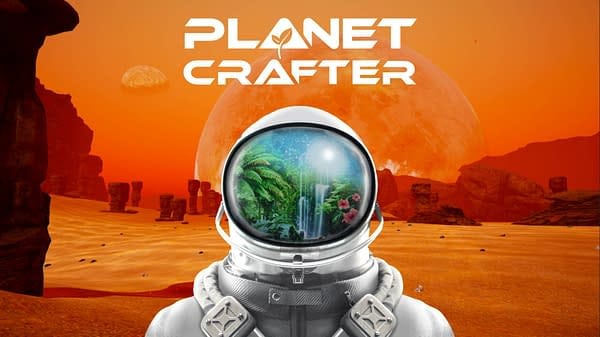
The months immediately after my layoff at the start of the year are still a little fuzzy in my memory, churned up in that particular froth of denial, anger, and uncertainty that come with such personal tragedies. I remember that in-between tracking down the immediate issues I had to deal with and sketching plans for my future timeline, I turned to games for an escape, as I often have.
And one game that was particularly satisfying for me at that time was Planet Crafter, an indie terraforming/survival game made by the tiny six-person team of Miju Games. In-between emails to ex-HR staff and bouts of updating my resume, I’d avoid thinking about how my world had fallen apart and distract myself by building a new one from scratch.
It’s not a perfect game, by any means, but it was exactly what I needed at the time.
Planet Crafter (2024, Miju Games)
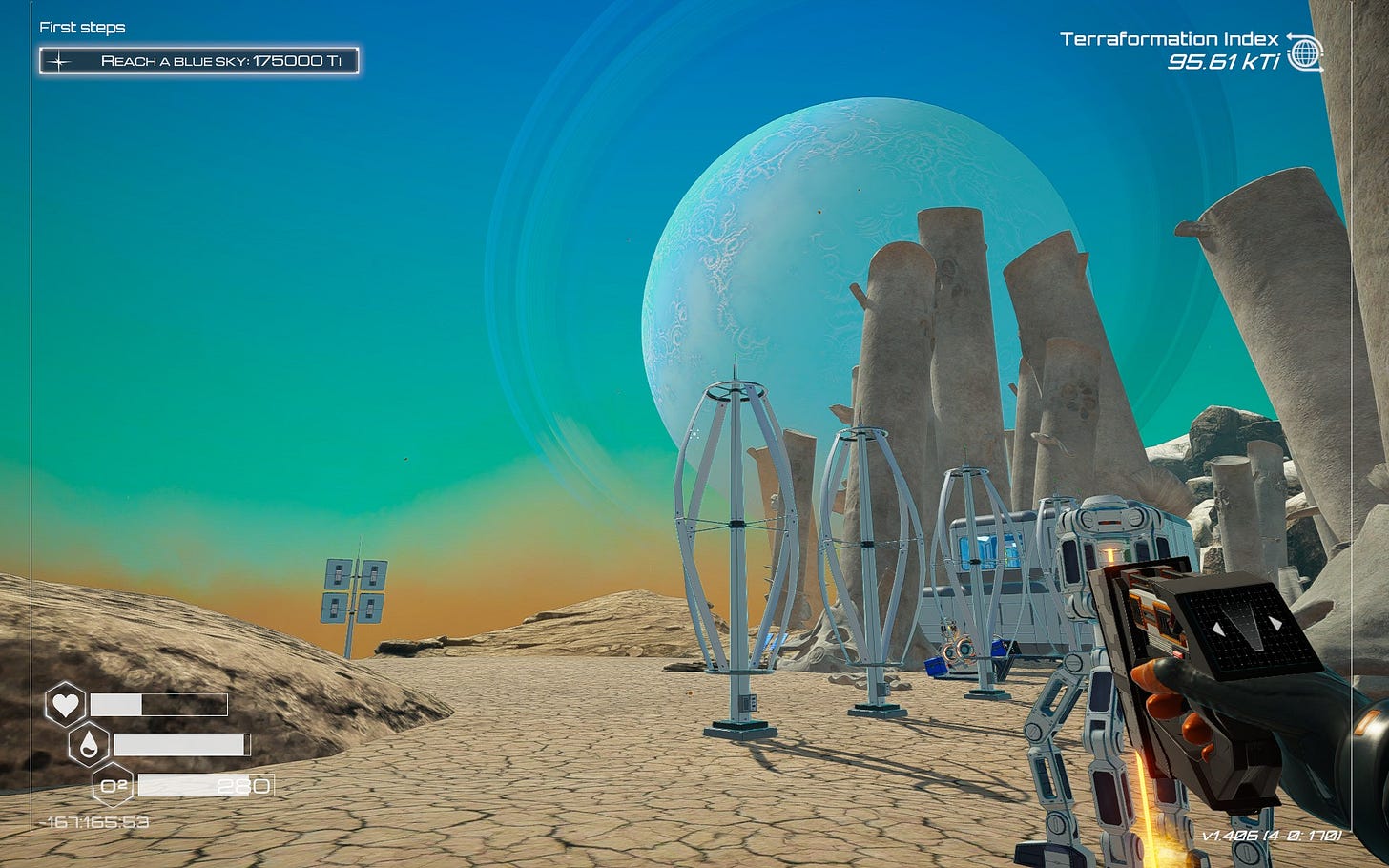
What Is It?
Ostensibly a survival game in the vein of Satisfactory of Subnautica, Planet Crafter sees you marooned on a barren, desert planet with nothing more than a landing capsule, a generic mining/building sci-fi tool, and a whole lot of plans for what to build. And while the gameplay will see you collecting various resources, building bases, and expanding your blueprints like any of those other games, this undersells the true cleverness behind the game: unlike those other survival games, your actions (and the actions of any fellow players) will actually have an impact on the environment around you.
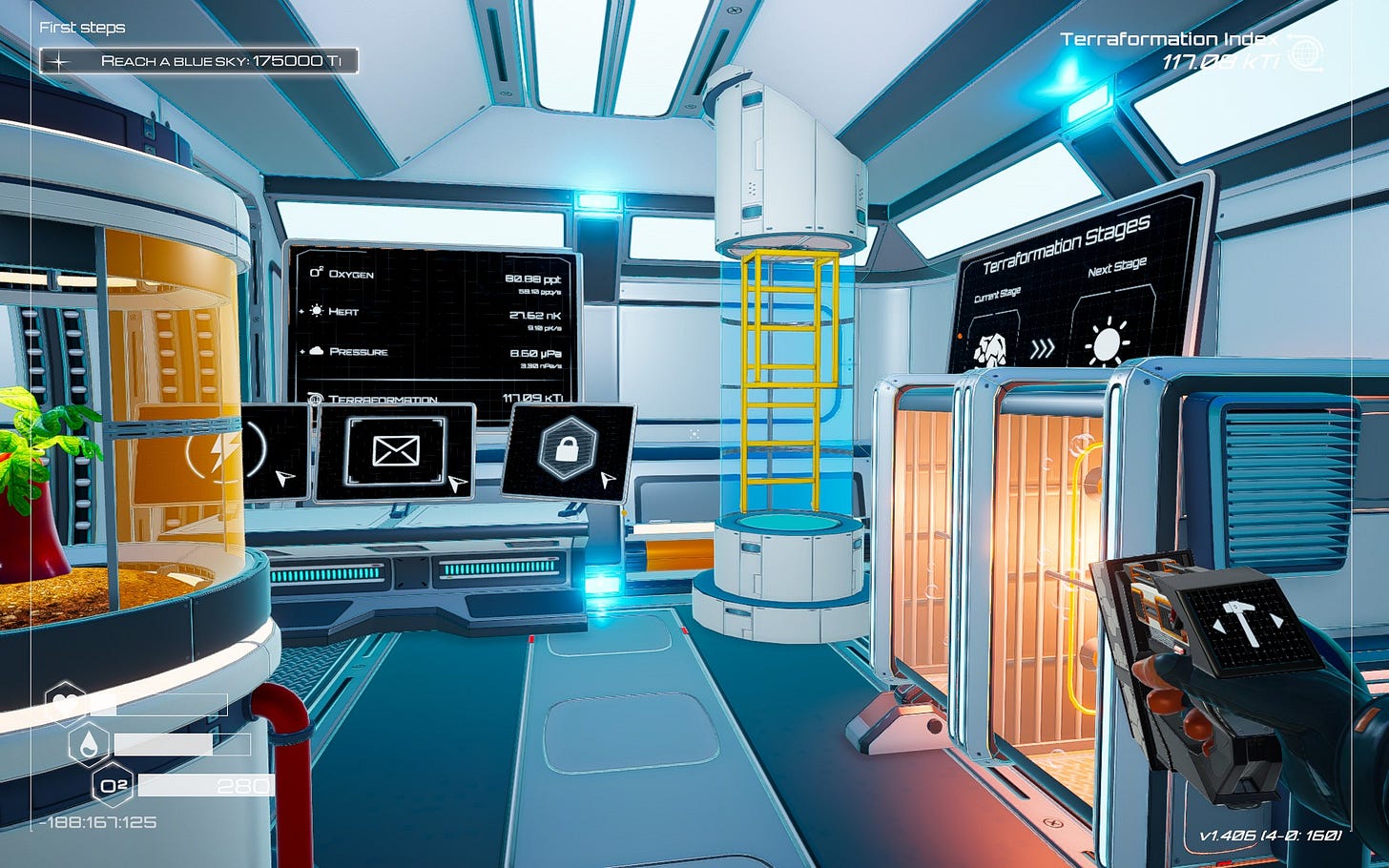
What Makes It Stand Out?
See, in addition to building structures where you can replenish your air supply or grow food, and all those other staples of survival games, you’re also be building machines to advance various metrics of the “Terraforming Index”.
This means setting up drills to increase the atmospheric pressure of the planet, or heaters to raise its temperature, or vegetation stations to produce oxygen. These processes seem unbearably slow at first, but your progress quickly speeds up as you get more advanced blueprints and materials.
Before long, the red sky of your barren planet will turn blue with atmosphere, and you’ll see clouds of water vapor forming in the sky. Ice caves will melt, opening new depths to explore and mine, and soon it’ll begin to rain, forming bodies of water in low-lying areas (hope you built your base on a hill!). And later in the game, as you spread plant, insect, and eventually higher animal lifeforms, you’ll find entire biomes have changed from barren craters to lush wetlands teaming with flowers and butterflies.
See, once you get into the game, you realize that Planet Crafter is actually a sort of reverse-Subnautica. Instead of crashing in the lush tropical vibrancy and going to progressively darker and less-welcoming depths, Planet Crafter begins with the ugliest and cruelest environments and gets more beautiful as you play.
Now, this is probably not a great player arc for selling the game in a demo — but it’s definitely a satisfying experience in the long-run.
What Does and Doesn’t Work?
The changes you cause in the environment are the big draw, and definitely its strength. The way it’s all fed through milestones on the Terraforming Index mechanic means that progress there is handled a bit like an idle-game. Once you’ve built a few of the latest tier of machines, you can let them chug along while you focus on other things like improving your base or exploring new areas. And then, before you know it, you’re hiking back from the smoking pits where you found some new materials and suddenly it’s raining for the first time on the desert planet.
I can’t really sum up how satisfying those moments can be — it’s the epitome of the environment reacting to your actions, the holy grail for RPG nerds and systems nerds alike. There are only a handful of big moments like that in the game, but they hit nicely.
Now, the downside of being the reverse-Subnautica is that there’s no particularly deep story to uncover, nor even a huge climax or turning point of the experience like you see in Subnautica’s various big moments. There are a couple hidden secrets on each planet you can settle, and a variety of the obligatory “environmental storytelling layout with a self-contained text log” scenes, and while they’re appreciated, they’re not particularly substantial.
Furthermore, the game kind of misses its ultimate promise of a richly vibrant world at the end: even at the game’s most gorgeous, you’re never seeing the sort of lush and vibrant world as Subnautica, and certainly none of the awe-inspiring and interlocking fauna and ecosystems that you see even at the start of that game. At best, you’ll have a handful of wandering animals in specific places, maybe eating some of the plants that you’re growing for them.
And that’s not the only promise that isn’t really realized: for all the idea that your devices are impacting the Terraforming Index to change the world based on careful planning, it’s just working on idle-game logic. A drill of this size adds a fixed amount of heat and pressure, regardless of where it’s drilling; a T2 solar panel station adds 19.50kW of power, regardless of whether it’s facing the sun (or even outside).
You may begin the game carefully arranging your drills and wind turbines and heaters and such in neat rows or distributing them around the biomes, eventually you’ll realize it doesn’t matter, and you’ll just start dropping everything of a similar type near each other, in Drill City and Nuke Plant Land. It’s a big planet, but you might as well stack all of the power generators in the same place, so they can benefit from the one or two effect-boosting buildings that you can place.
There’s no way you can overshoot on the heating and drilling and accidentally ruin the ecosystem you so lovingly (or heavy-handedly) built up over time. When you call down meteors to help warm the atmosphere, those meteors crash down and rain iridium resources willy-nilly, but cause no damage to any of your structures that they hit. There’s no downside to running a dozen unshielded nuclear power plants in the middle of your lush jungle. You can put your rocket launch pads right next to your butterfly biodomes, and everything is just peachy.
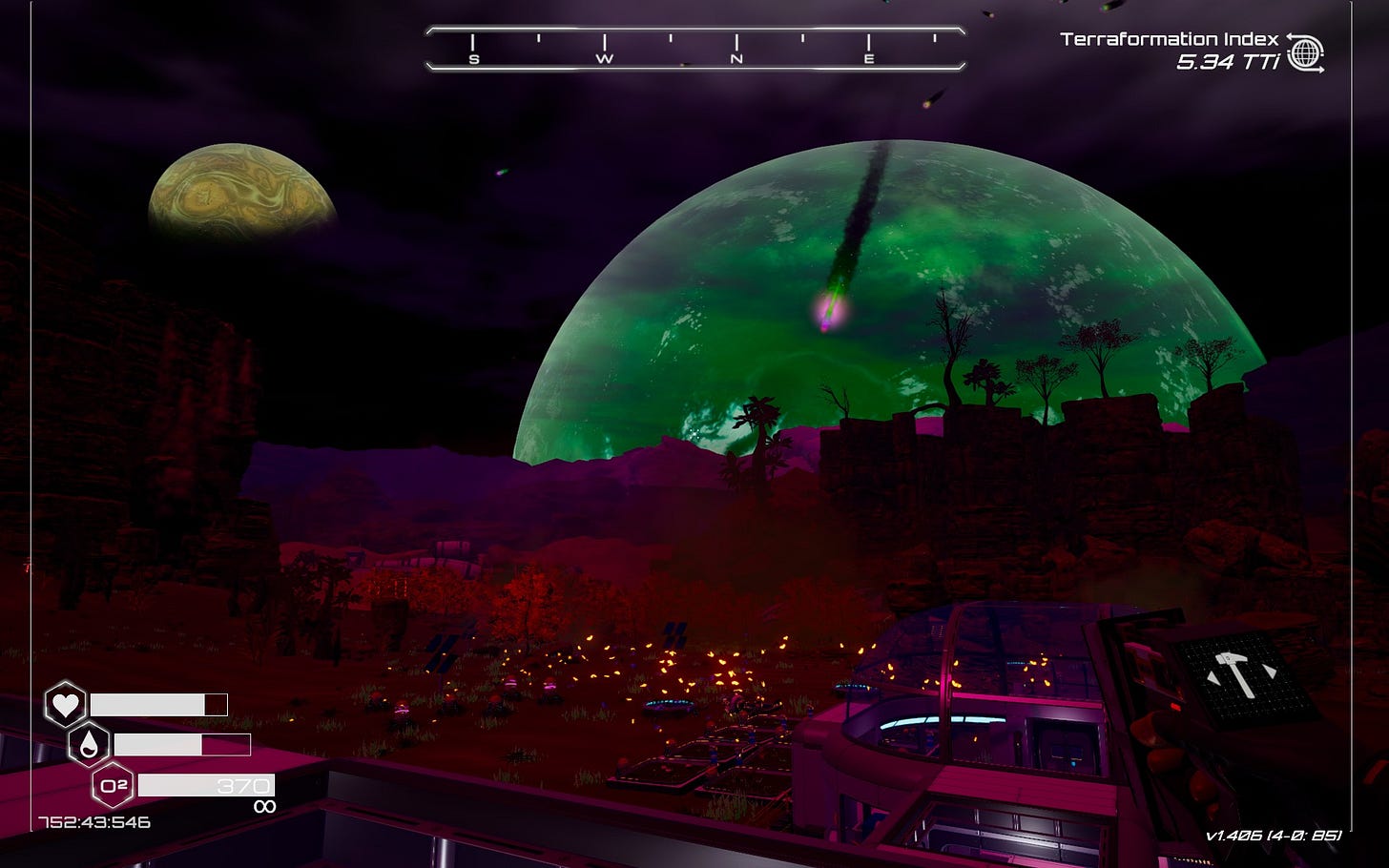
Ultimately, I can’t fault a game made by just 6 people for not being perfectly simulationist like that. But it does end up undermining some of that sense of the awesome power of terraforming and the delicate balance of an ecosystem.
What’s It Saying?
Apart from some the oversimplification of terraforming that may lead some to mistakenly think colonizing space would be easy, there’s not a whole lot of deep story going on here. The moments of overt story you discover in environmental storytelling scenes or intergalactic emails paint a “dystopia indentured servant of the corporation that sent you here” that hits the same notes as Subnautica, but often without the same charm. Even the occasional hidden secrets within the planet feel more like an easter egg than a revelation.
Again, this is likely an artifact of the team’s tiny size — there likely wasn’t anyone specifically dedicated to storytelling, so it followed familiar narratives in the genre. Something I’d expect in their next game, but not something I’m going to slam them on for their first.

Instead, this is more of a homesteader fairy-tale. A pleasing one, an enjoyable one, but absolutely a fantasy — one where you’re bound to succeed eventually. Sometimes, we all need a power fantasy.
Who’s It For?
In the process of writing this review, I’ve found myself coming down a little harder on Planet Crafter than I would have expected for all the joy I’ve had while playing it. Hell, I still occasionally pop back into the game to see the post-launch content, explore the new planet they’ve added, and generally enjoy the experience again. I only just realized that the entire team was six people strong, which prompted me to review this article and be a little more gentle in places. It’s a hell of a strong product for such a small team, and I’d encourage anyone who likes supporting growing studios to check it out on that strength alone.
Meanwhile, the game may not be for survival game purists who want a world that adds complexity and challenges as you rise to meet it, but I suspect it will appeal to survival game fans who are just tired of the same punch-trees, collect-rocks, combine and repeat process that so many other survival games offer. Players who want a more relaxed sort of survival game; a sandbox that gets prettier as you play, and one that can be played alongside friends.
The system-driven nature of the game does hint that it’ll appeal to people who like mechanics-driven games, but I’d warn anyone who’s really focused on the details of their simulationism not to expect supreme detail there. You’ll still enjoy it well enough, but for deep complexity, you may instead want to explore Oxygen Not Included or Dwarf Fortress.
Or, of course, considering its many similarities with Subnautica, it may be appealing to fans of those games who are looking for a little twist on that experience — especially at a low cost and while they wait for the new sequel. And no matter what, the success of Planet Crafter suggests that we’ll see even more impressive work from this tiny powerhouse in the future.
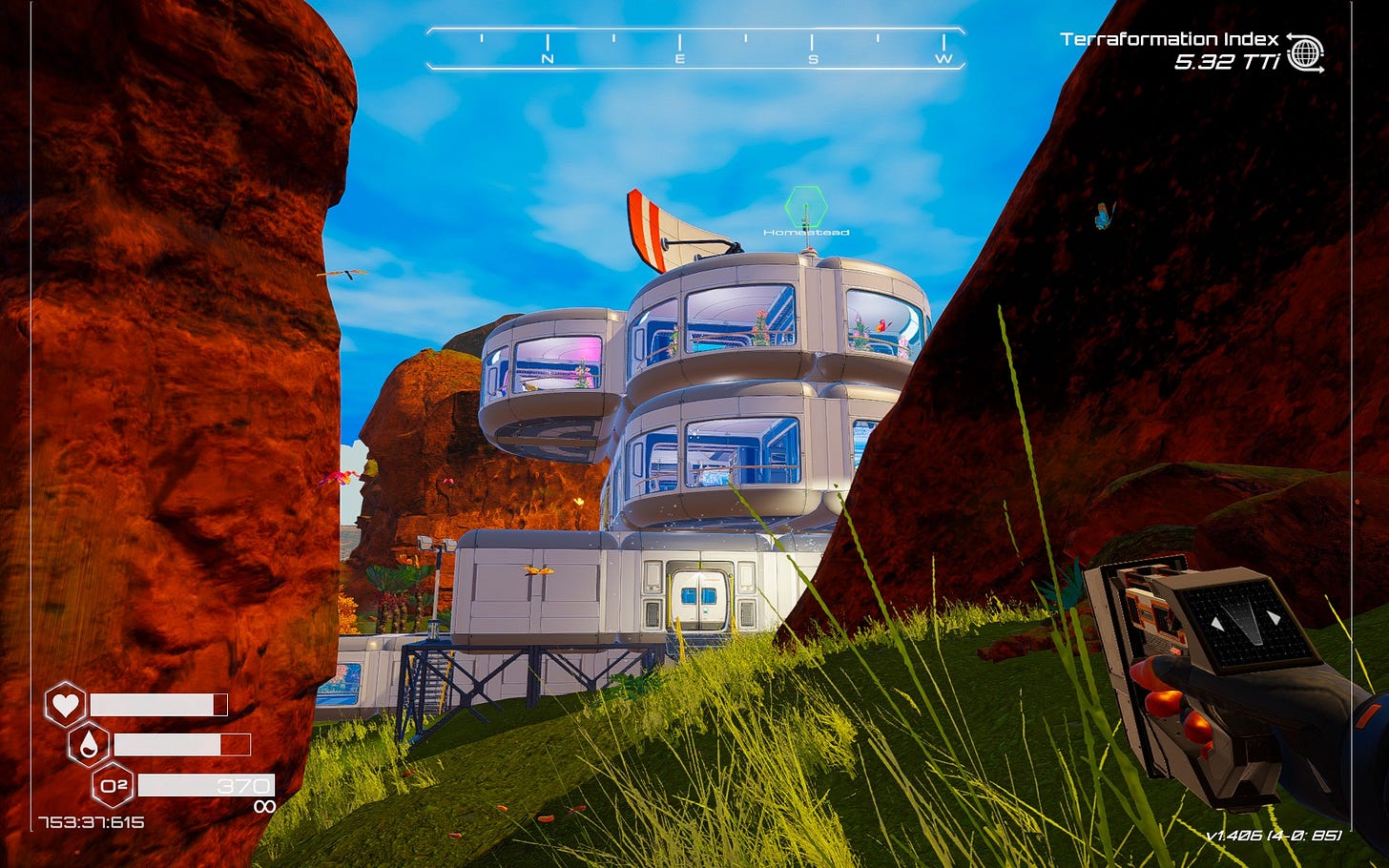




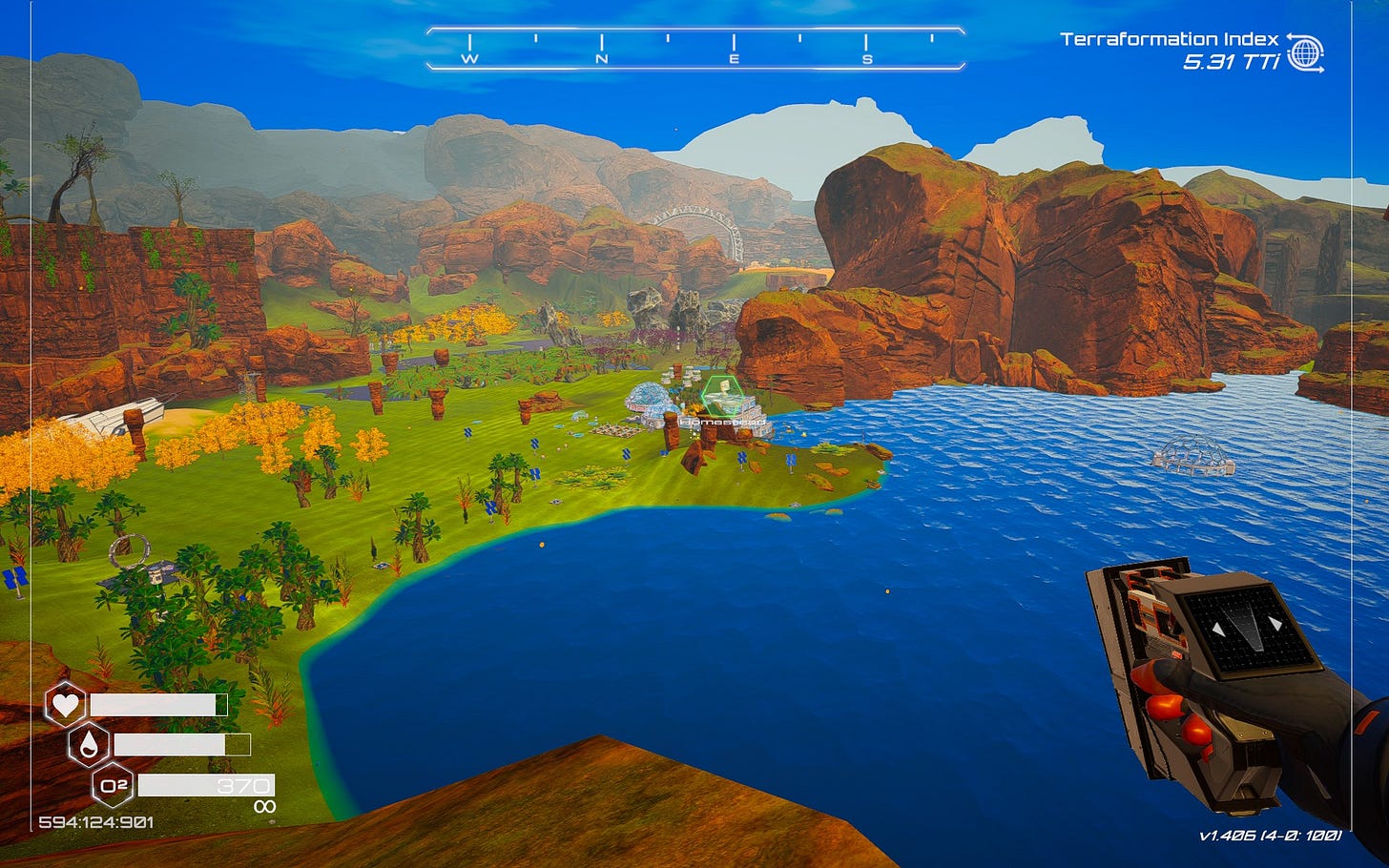

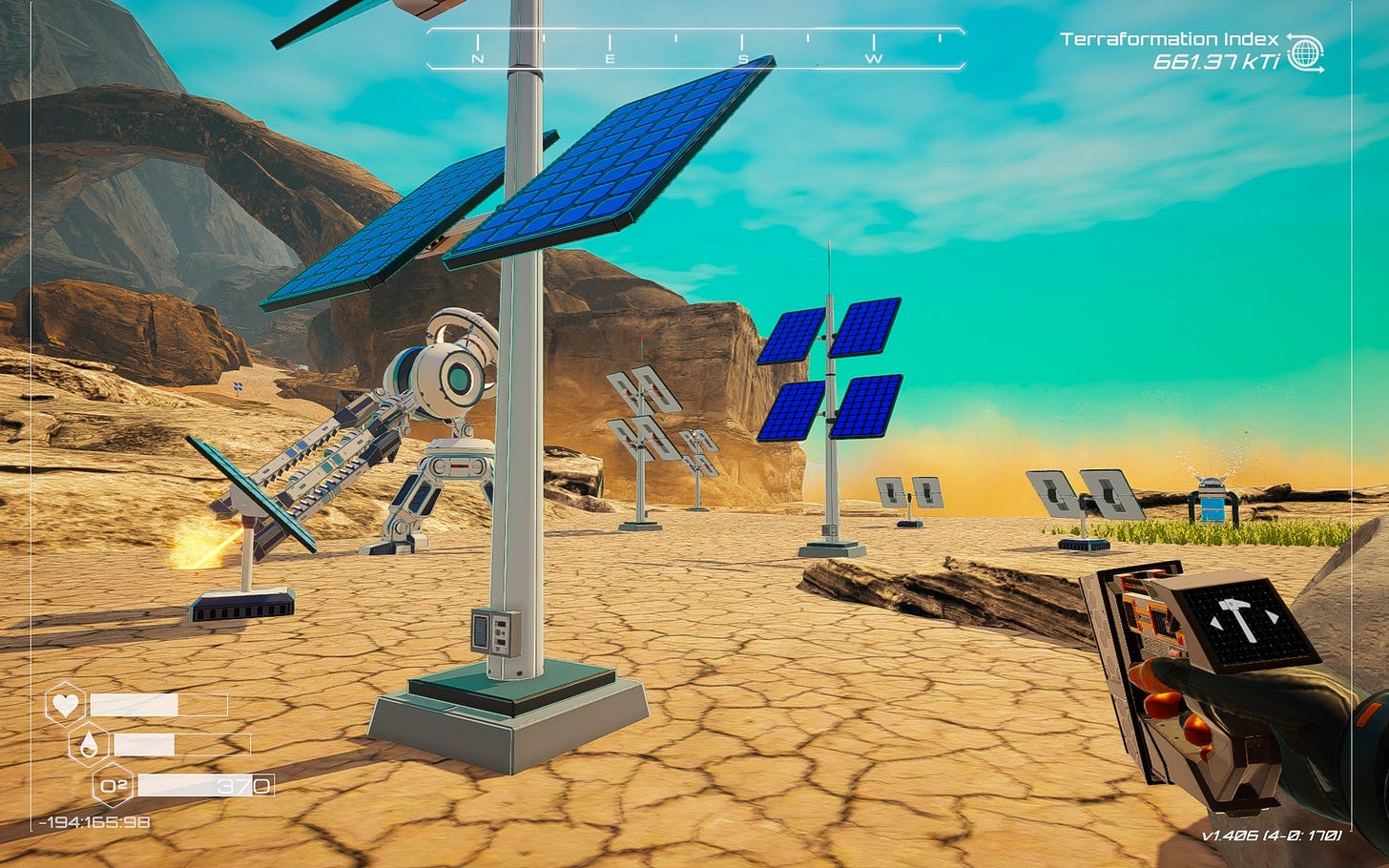
It may be that the creators of the game preferred the first part of "Robinson Crusoe" over "The Book of Genesis": hence, the limited terraforming results instead of "lush forests". Your personal emotional experience seems to have been more of an affirmation of your ability to survive and change your individual circumstances, rather than to "change the whole world". The game also seems intended to avoid the notion that "too much success is its own kind of failure". In short, this one seems to be more of a "playing game" than a "winning game".
Great summary of the game. I spent 2024 chasing my Subnautica high (it was my last game of 2023) and Planet Crafter came the closest from a vibes perspective. I think it was that feeling of progress (new blueprint dopamine) coupled with mystery of exploration—often combined as terraforming opens up new areas to delve into.
But I was genuinely disappointed in the narrative payoff (or lack thereof). Maybe it’s an unfair comparison but there was so much catharsis in Subnautica’s departure. Ending this game felt abrupt and thin.
Like you though, I’m pumped for what this team puts out next and it’s a major accomplishment and probably my favorite game of the year.